Aging Symptoms
Safety Spotlight: Aging Aircraft
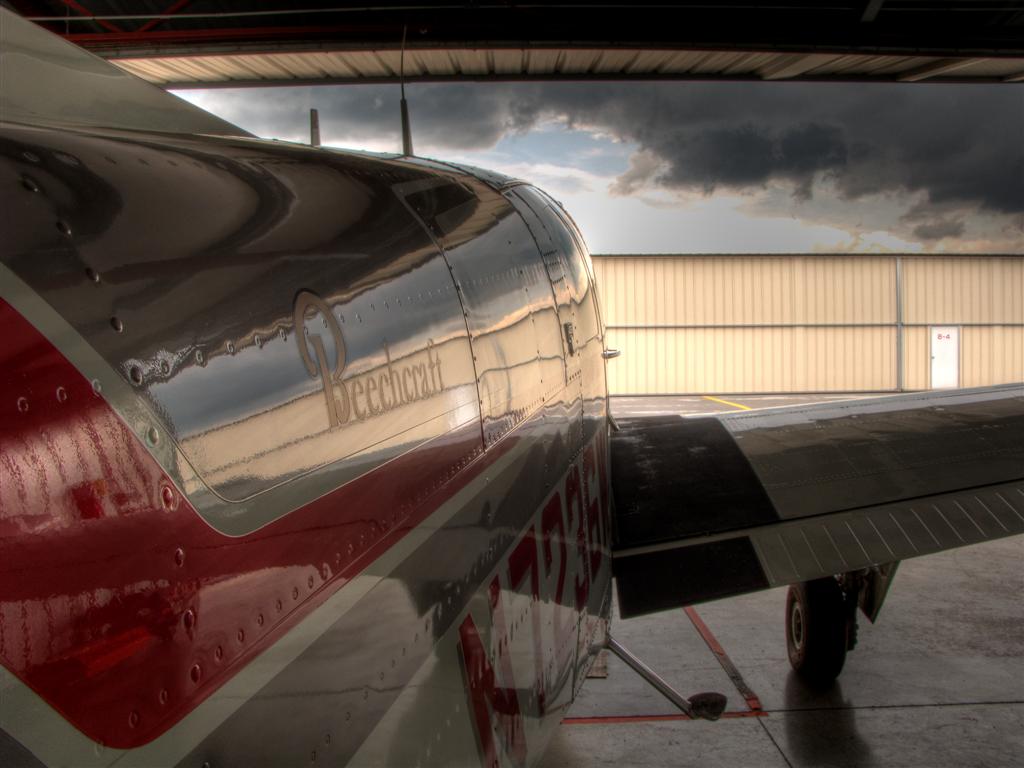
On the Outside
Let’s review some common symptoms of an aircraft exterior’s aging.
| Issue | Cause/What to Look For | What it Looks Like |
|---|---|---|
| Non-structural cracks and deformities | These are commonly found on prop spinners and hubs, paint, fairings, cowlings, tail cones, wing tips, and windows |  |
| Propeller | Inspect it for scratches, nicks, cracks, and corrosion that can lead to stress fatigue | 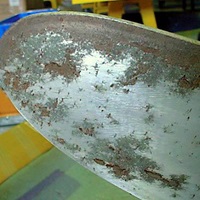 |
| Tires | Heat, sunlight, improper inflation, and hard landings can eventually cause wear and rotting | 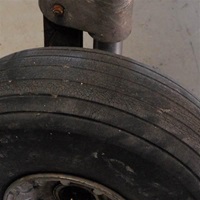 |
| Rust | Inspect any steel components for rust | 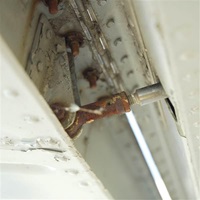 |
| Exhaust trail areas | Exhaust can cause corrosion on the aircraft’s surface, especially in gaps, seams, and hinges where normal cleaning methods can’t reach | 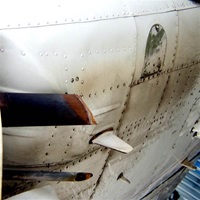 |
| Windshield | Continuous flexing and exposure to sunlight can cause windshields to scratch, crack, and craze | 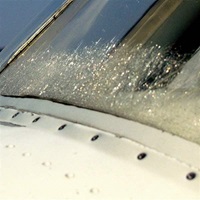 |
| Rivets | Rivet corrosion, also known as fretting corrosion, appears as black streaks, which are sometimes called “smoking” rivets |  |
| Antenna | Inspect for deterioration and secure attachment to the aircraft | 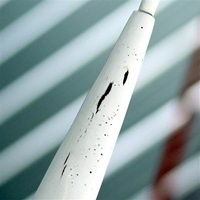 |
| Wheel wells, landing gear, and fluid lines | Exposure to water and debris make this area a hot spot for corrosion—inspect for corrosion, leaks, and deformities (note that fluid lines can deteriorate and corrode from the inside out) | 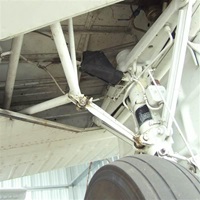 |
| Control surfaces and skin joints | Corrosion can result from dirt and moisture that has collected in these areas | 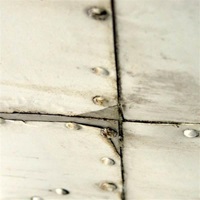 |
| Piano hinges | These are susceptible to corrosion because of two factors: trapped dirt and moisture, and the adjoining of two dissimilar metals (fretting corrosion) | 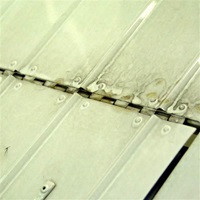 |
| Hidden corrosion | Sometimes corrosion is easily seen, but it can also be hiding beneath the paint | 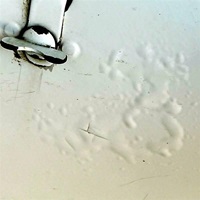 |
Tip: Cleaning the aircraft on a regular basis can help alleviate some of these problems.
Tip: Review FAR 43 Appendix A(c) for a list of preventive maintenance items that you can perform to help preserve and protect your aircraft. Also, AC 43.13-1B has information on inspecting and testing fabric covered aircraft (see Chapter 2, Section 3).
On the Inside
Now, let’s take a closer look at some common symptoms of an aircraft interior’s aging.
| Issue | Cause/What to Look For | What it Looks Like |
|---|---|---|
| Control cables, cranks, and pulleys | Inspect for contaminant buildup, cracking, excessive or uneven wear on the pulleys, chafing, and corrosion | 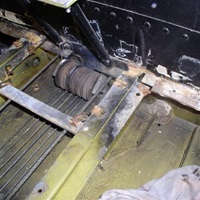 |
| Battery compartment | Toxic fumes and liquids can be corrosive to the battery and surrounding area |  |
| Wooden structure | Inspect any wooden structures, components, or hardware for rotting and corrosion | 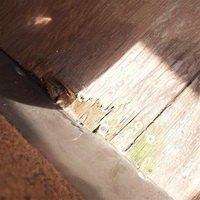 |
| Structural components | Inspect for signs of corrosion and fatigue—a non-destructive inspection (NDI) can be used to inspect for cracks and corrosion that are not visible to the naked eye | 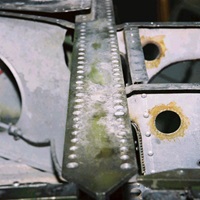 |
| Fuel tanks | The tanks and their surrounding areas can deteriorate, corrode, and leak over time | 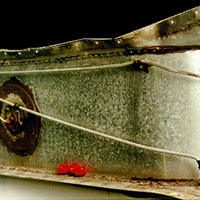 |
| Hidden corrosion | Inspect for corrosion behind headliners, instrument and side panels, beneath floorboards, and in the engine compartment |  |
| Fluid lines | Inspect for contaminant buildup that can lead to corrosion (note that fluid lines can deteriorate and corrode from the inside out) | 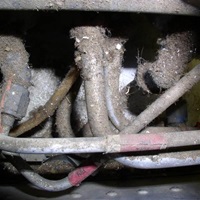 |
| Doors and windows | Flexible acrylic windows and door and window seals eventually break down, creating water leaks that can lead to corrosion | 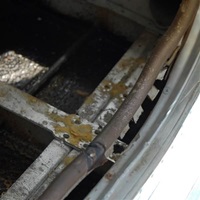 |
| Beneath floorboards | Dirt and contaminants can build up—and become flammable—because this area isn’t easy to clean | 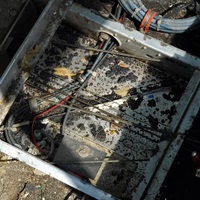 |
| Seats and seat tracks | Inspect for fatigue cracks, corrosion, and damage on seat frames and tracks—also, inspect the condition of seatbelts and harnesses | 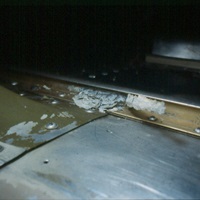 |
| Hardware | Inspect all hardware for corrosion or rust | 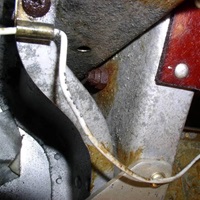 |
| Wiring | Inspect behind the instrument panel, side panels, and forward of the firewall for proper parts, installation, and general condition—also cycle circuit breakers on a regular basis to keep them functioning properly |  |
Tip: Cleaning the inside of an aircraft helps remove contaminants that can cause corrosion, abrasion, and non-structural cracking. Keep in mind, however, that cleaning an aircraft does not prevent fatigue.
Real Pilot Story: Fire in the Cockpit
Proper maintenance is critical for all components of an airplane. Watch how an improperly installed terminal lug on the landing gear hydraulic pump caused a fire inside the cockpit. One minute, it was a routine training flight—the next, a desperate struggle for survival.
Under the Cowling
Engines—along with their components, accessories, and fluid lines—are also subject to aging.
| Issue | Cause/What to Look For | What it Looks Like |
|---|---|---|
| Hardware | Screws, bolts, bushings, and other hardware can corrode and crack, diminishing their strength | 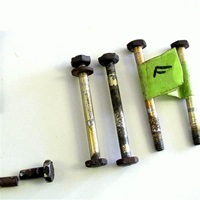 |
| Engine mounts | The load and vibration of the engine can eventually result in fatigue stress, cracks, and corrosion |  |
| Engine components | Heat and friction cause wear and tear on moving parts, such as pistons, piston rings, valves, and cylinder walls | 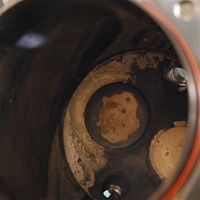 |
| Fluid lines | These can deteriorate or collapse from the inside out—check with your aircraft manufacturer’s recommendations for fluid line replacement |  |
| Engine exhaust, intake, mufflers, and heater muffs | Check for corrosion, cracks, and signs of leakage |  |
| Hoses | When hoses become dry and brittle, they can develop cracks and leaks |  |
| Gaskets | These can break down and leak |  |
| Baffles | Check for proper fastening, fitting, cracks, and deterioration |  |
| Belts | These will eventually develop cracks and can lose teeth | 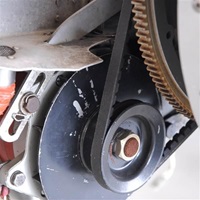 |
Tip: During periods of inactivity, corrosion can develop inside the engine due to condensation and loss of protective oil on the surfaces of moving parts, possibly leading to damage during the next start-up. To keep your aircraft's engine healthy, follow the manufacturer's recommendations for long-term storage—or just fly the aircraft more often.